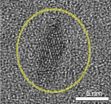(Press-News.org) New York, NY (June 7, 2012) — Researchers at Columbia University Medical Center (CUMC) have identified a brain receptor that appears to play a central role in regulating appetite. The findings, published today in the online edition of Cell, could lead to new drugs for preventing or treating obesity.
"We've identified a receptor that is intimately involved in regulating food intake," said study leader Domenico Accili, MD, professor of Medicine at CUMC. "What is especially encouraging is that this receptor is belongs to a class of receptors that turn out to be good targets for drug development, making it a highly 'druggable' target. In fact, several existing medications already seem to interact with this receptor. So, it's possible that we could have new drugs for obesity sooner rather than later."
In their search for new targets for obesity therapies, scientists have focused on the hypothalamus, a tiny brain structure that regulates appetite. Numerous studies suggest that the regulatory mechanism is concentrated in neurons that express a neuropeptide, or brain modulator, called AgRP. But the specific factors that influence AgRP expression are not known.
The CUMC researchers found new clues to appetite control by tracing the actions of insulin and leptin. Both hormones are involved in maintaining the body's energy balance, and both are known to inhibit AgRP. "Surprisingly, blocking either the insulin or leptin signaling pathway has little effect on appetite," says Dr. Accili. "We hypothesized that both pathways have to be blocked simultaneously in order to influence feeding behavior."
To test their hypothesis, the researchers created a strain of mice whose AgRP neurons lack a protein that is integral to both insulin and leptin signaling. As the researchers hypothesized, removing this protein — Fox01 — had a profound effect on the animals' appetite. "Mice that lack Fox01 ate less and were leaner than normal mice," said lead author Hongxia Ren, PhD, associate research scientist in Medicine. "In addition, the Fox01-deficient mice had better glucose balance and leptin and insulin sensitivity — all signs of a healthier metabolism."
Since Fox01 is a poor drug target, the researchers searched for other ways to inhibit the action of this protein. Using gene-expression profiling, they found a gene that is highly expressed in mice with normal AgRP neurons but is effectively silenced in mice with Fox01-deficient neurons. That gene is Gpr17 (for G-protein coupled receptor 17), which produces a cell-surface receptor called Gpr17.
To confirm that the receptor is involved in appetite control, the researchers injected a Gpr17 activator into normal mice, and their appetite increased. Conversely, when the mice were given a Gpr17 inhibitor, their appetite decreased. Similar injections had no effect on Fox01-deficient mice.
According to Dr. Accili, there are several reasons why Gpr17, which is also found in humans, would be a good target for anti-obesity medications. Since Grp17 is part of the so-called G-protein-coupled receptor family, it is highly druggable. About a third of all existing drugs work through G-protein-coupled receptors. In addition, the receptor is abundant in AgRP neurons but not in other neurons, which should limit unwanted drug side effects.
###Dr. Accili and Dr. Ren's paper is titled, "G protein-coupled purinergic receptor GPR17 mediates orexigenic effects of FoxO1 in AgRP neurons." The other contributors are Ian J. Orozco (CUMC), Ya Su (Albert Einstein College of Medicine, Bronx, NY), Shigetomo Suyama (Yale University School of Medicine), Roger Gutiérrez-Juárez (Einstein), Tamas L.
Horvath (Yale), Sharon L. Wardlaw (CUMC), Leona Plum (CUMC), and Ottavio Arancio (CUMC).
The study was supported by grants from the National Institutes of Health (DK58282, DK57539, DK80003, DK45024, NS49442, and DK63608).
The authors declare no financial or other conflicts of interest.
Columbia University Medical Center provides international leadership in basic, pre-clinical and clinical research, in medical and health sciences education, and in patient care. The medical center trains future leaders and includes the dedicated work of many physicians, scientists, public health professionals, dentists, and nurses at the College of Physicians and Surgeons, the Mailman School of Public Health, the College of Dental Medicine, the School of Nursing, the biomedical departments of the Graduate School of Arts and Sciences, and allied research centers and institutions. Established in 1767, Columbia's College of Physicians and Surgeons was the first institution in the country to grant the M.D. degree and is among the most selective medical schools in the country. Columbia University Medical Center is home to the largest medical research enterprise in New York City and State and one of the largest in the United States.
Upon its official opening in October 1998, the Naomi Berrie Diabetes Center at Columbia University Medical Center established a new standard of care for the 1.6 million people with diabetes in the New York area—combining world-class diabetes research and education programs with unprecedented family-oriented patient care. Named for the mother of the late Russell Berrie, founder of RUSS™ Toys, the center is today recognized as the most comprehensive diabetes research and treatment center in the tri-state region and has been designated a national "Diabetes Center of Excellence" – one of only three in the state of New York. Approximately one hundred faculty and students, affiliated with the Center, conduct basic and clinical research related to the pathogenesis and treatment of all forms of diabetes and its complications. For more information, visit www.nbdiabetes.org.
New brain target for appetite control identified
Finding raises hopes for new anti-obesity medications
2012-06-08
ELSE PRESS RELEASES FROM THIS DATE:
New twist on old chemical process could boost energy efficiency
2012-06-08
Chemical reactions on the surface of metal oxides, such as titanium dioxide and zinc oxide, are important for applications such as solar cells that convert the sun's energy to electricity. Now University of Washington scientists have found that a previously unappreciated aspect of those reactions could be key in developing more efficient energy systems.
Such systems could include, for example, solar cells that would produce more electricity from the sun's rays, or hydrogen fuel cells efficient enough for use in automobiles, said James Mayer, a UW chemistry professor.
"As ...
Parasitic plants 'steal' genes from their hosts
2012-06-08
New research published today in BioMed Central's open access journal BMC Genomics reveals that the Malaysian parasitic plant Rafflesia cantleyi, with its 50cm diameter flowers, has 'stolen' genes from its host Tetrastigma rafflesiae. Analysis of these genes shows that their functions range from respiration to metabolism, and that some of them have even replaced the parasites own gene activity.
Vertical gene transfer is that between parents and their offspring, while horizontal gene transfer is the movement of genes between two different organisms. Bacteria use horizontal ...
Engineered robot interacts with live fish
2012-06-08
A bioinspired robot has provided the first experimental evidence that live zebrafish can be influenced by engineered robots.
Results published today, 8 June, in IOP Publishing's journal Bioinspiration and Biomimetics, provide a stepping stone on the path to using autonomous robots in an open environment to monitor and control fish behaviour.
In the future, water-based robots could potentially contribute to the protection of endangered animals and the control of pest species.
The robot, created by researchers from Polytechnic Institute of New York University and ...
Manipulating chromatin loops to regulate genes may offer future treatments for blood diseases
2012-06-08
In exploring how proteins interact with crucial DNA sequences to regulate gene activity, researchers have shed light on key biological events that may eventually be manipulated to provide new disease treatments.
Within a cell's nucleus, regulatory elements in DNA called promoters and enhancers communicate with each other in carrying out gene activity, often over large genomic distances, hundreds of thousands of chemical bases apart from each other in chromosomes. As these elements physically contact each other, the intervening DNA sequences bend into loops made of chromatin ...
Immune system 'circuitry' that kills malaria in mosquitoes identified
2012-06-08
Researchers at the Johns Hopkins Malaria Research Institute have, for the first time, determined the function of a series proteins within the mosquito that transduce a signal that enables the mosquito to fight off infection from the parasite that causes malaria in humans. Together, these proteins are known as immune deficiency (Imd) pathway signal transducing factors, are analogous to an electrical circuit. As each factor is switched on or off it triggers or inhibits the next, finally leading to the launch of an immune response against the malaria parasite. The study was ...
Pre-existing problems
2012-06-08
In a critical step that may lead to more effective HIV treatments, Harvard scientists have found that, in a small number of HIV patients, pre-existing mutations in the virus can cause it to develop resistance to the drugs used to slow the progression of the disease.
The finding is particularly important because, while researchers have long known HIV can develop resistance to some drugs, it wasn't understood whether the virus relied on pre-existing mutations to develop the resistance, or if it has to wait for those mutations to occur. By shedding new light on how resistance ...
Should spinal manipulation for neck pain be abandoned?
2012-06-08
The effectiveness of spinal manipulation divides medical opinion. On bmj.com today, experts debate whether spinal manipulation for neck pain should be abandoned.
Spinal manipulation is a technique that involves the application of various types of thrusts to the lumbar spine (lower back) or cervical spine (neck) to reduce back pain, neck pain and other musculoskeletal conditions.
Neil O'Connell and colleagues argue that cervical spine manipulation "may carry the potential for serious neurovascular complications" and that the technique is "unnecessary and inadvisable." ...
Patients suffering from pre-diabetes at potential future risk of stroke
2012-06-08
Millions of people suffering from pre-diabetes may be at a higher risk of stroke, a study published on bmj.com today suggests.
Pre-diabetes is characterised by higher than normal blood glucose levels that, if left untreated, develops into type 2 diabetes. The scale of the problem is enormous and growing, with an estimated 79 million people in the US and 7 million people in the UK affected.
People with pre-diabetes also harbour the same vascular risk factors as people with type 2 diabetes, such as high blood pressure, high cholesterol and obesity, but its effect on ...
By adding VSL#3 probiotic to traditional therapies UC patients can improve remission rates
2012-06-08
GAITHERSBURG, MD, June 7 – As one of the few probiotics with medical food designation for specific illnesses, VSL#3® has been the subject of a collection of more than 80 studies that have demonstrated its use in the dietary management of IBS, ulcerative colitis, and an ileal pouch. Ulcerative colitis patients, in particular, have been shown to benefit from adding VSL#3 medical food to their prescription drug regimen. One particular study shows that the combination of VSL#3 and traditional drug therapy can improve remission rates over drug therapy alone by 10 to 17 percent, ...
Haematopoietic stem cell transplantation increases survival in systemic sclerosis patients
2012-06-08
Berlin, Germany, June 7 2012: Initial results from an international, investigator-initiated, open label phase III trial were presented at EULAR 2012, the Annual Congress of the European League Against Rheumatism. Data indicate that haematopoietic stem cell transplantation (HSCT) results in better long term survival than conventional treatment for patients with poor prognosis early diffuse cutaneous systemic sclerosis.
The ASTIS (Autologous Stem Cell Transplantation International Scleroderma) trial enrolled more than 150 patients between 2001 and 2009, and randomised ...
LAST 30 PRESS RELEASES:
Tec-Dara combination offers substantial improvement over standard second-line therapies for relapsed or refractory multiple myeloma
Improving treatment for an autoimmune bleeding condition
Drug reduced need for blood transfusions during hospitalization for non-cardiac surgery
Novel agent ianalumab added to standard therapy extends time to treatment failure in patients with previously treated immune thrombocytopenia
Pirtobrutinib outperforms bendamustine plus rituximab for previously untreated CLL/SLL
Online tracking and privacy on hospital websites
A freely available tool to document wartime destruction
Residential solar panels can raise electricity rates
Scientists use synthetic platelets as ‘Trojan horse’ drug-delivery system
Cooperative Intermolecular Interactions Regulate Supramolecular Polymer Assembly
Korea University researchers develop ultrasensitive method to detect low-frequency cancer mutations
First patient enrolled in GOG-3133/ FRAmework-01 phase 3 study evaluating sofetabart mipitecan (LY4170156), a novel ADC targeting folate receptor alpha (FRα), in recurrent ovarian cancer
Two Hebrew University researchers win prestigious ERC consolidator grants
ERC grant helps to quantify the impact of anthropogenic air pollution particles on climate
Exercise might help improve mobility during aging
New online tool detects drug exposure directly from patient samples
Learn the surprising culprit limiting the abundance of Earth’s largest land animals
Study reveals new ways the brain regulates communication between neurons
Research reveals new hybrid state of matter where solids meet liquids
Researchers develop a new computational tool to understand how genetic interactions impact human traits
Elephants, giraffes and rhinos go where the salt is
Cancer loses its sense of time to avoid stress responses
The twisted nanotubes that tell a story
Flaring black hole whips up ultra-fast winds
Study explores the link between newspaper preference and attitudes towards autism
Artificial turf in the Nordic climate – a question of sustainability
The hidden toll of substance use disorder: annual cost of lost productivity to US economy nearly $93 billion
Among psychologists, AI use is up, but so are concerns
Recycling a pollutant to make ammonia production greener
Common institutional ownership linked to less aggressive business strategies in Chinese firms
[Press-News.org] New brain target for appetite control identifiedFinding raises hopes for new anti-obesity medications


